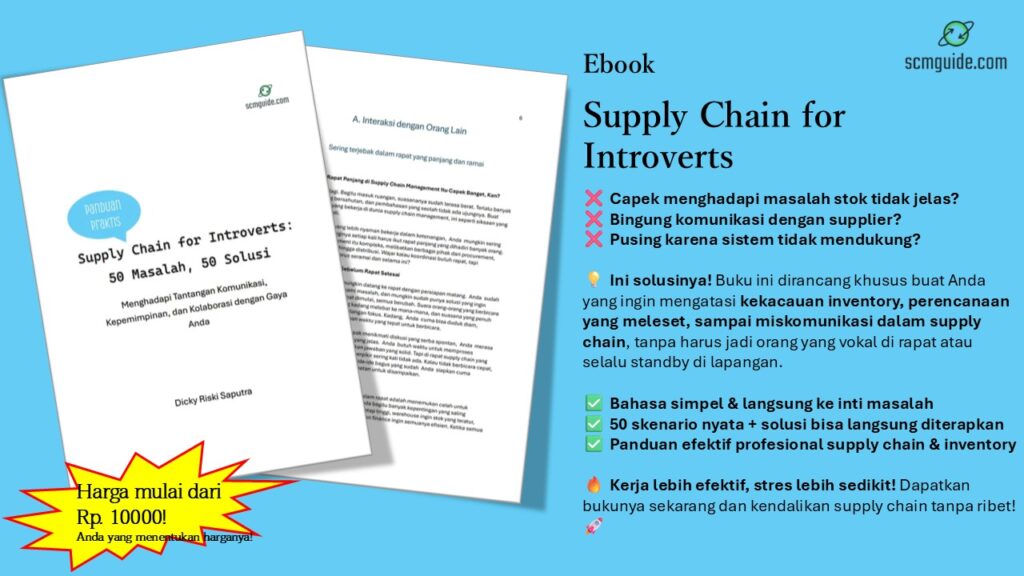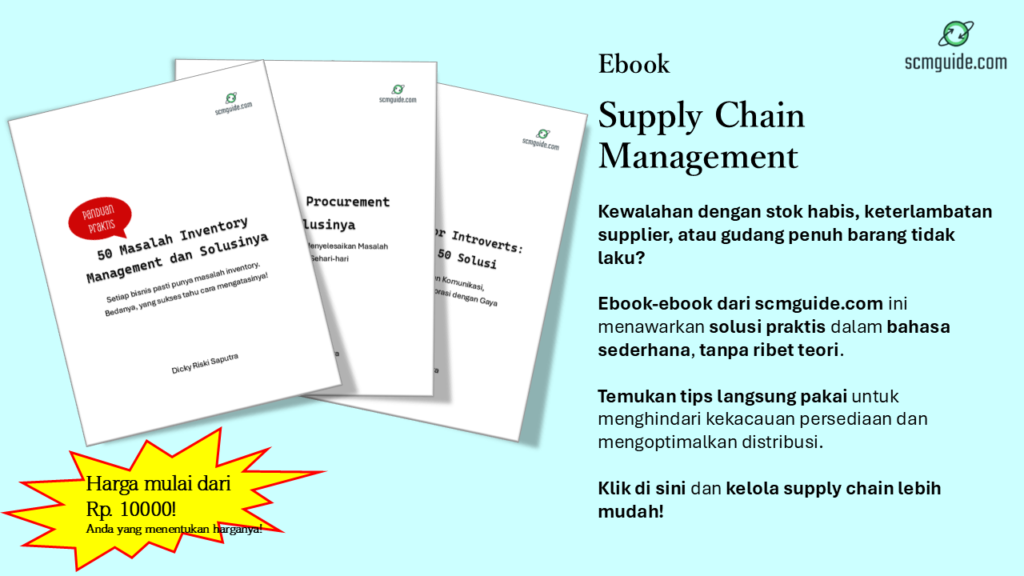If you’re part of a company where Production Planning and Inventory Control (PPIC) and Sales teams work together, you might have noticed that conflicts can arise from time to time. These issues can disrupt your workflow, impact productivity, and even affect customer satisfaction.
But don’t worry—we’re here to help. In this comprehensive guide, we’ll explore the 10 most common conflicts between PPIC and Sales, and provide practical solutions to address them effectively. By the end, you’ll have a solid understanding of how to foster better teamwork and achieve smoother operations.
Before we go further into this topic, don’t forget to follow my LinkedIn account. You’ll get more helpful insights on supply chain management there.
Table of Contents
Sales Forecasts vs. Production Plans
The Issue: It’s a scenario many of us are familiar with—Sales teams provide optimistic forecasts, but Production teams are left grappling with the reality of what can actually be produced. This misalignment can lead to a range of problems, from stock shortages to excess inventory. Imagine promising a customer a product that your production line can’t meet due to these discrepancies. It’s frustrating and potentially damaging to both sales and customer relationships.
The Solution: The key to resolving this conflict is open and regular communication. Set up routine meetings where Sales and PPIC teams can discuss forecasts and production plans. During these meetings, both teams should share their data and insights to ensure alignment. Tools like forecasting software can help both departments get on the same page by providing a clear picture of expected demand versus production capabilities. By bridging this gap, you can avoid misunderstandings and ensure that production schedules meet sales expectations.
Actionable Steps:
- Schedule weekly or bi-weekly meetings between Sales and PPIC.
- Use forecasting tools to align sales predictions with production capacity.
- Create a shared document or dashboard where both teams can access real-time data.
Promises vs. Inventory
The Issue: Sales teams might promise more products than what’s available in the inventory, leading to a situation where the production team struggles to keep up, or worse, customers end up disappointed. This mismatch between what’s promised and what’s available can damage your company’s reputation and hurt customer satisfaction.
The Solution: Implement a real-time inventory management system that allows both Sales and PPIC to see up-to-date stock levels. This transparency ensures that Sales teams are aware of current inventory and can make promises that align with what’s realistically available. Regular communication is also crucial—Sales should check in with PPIC to confirm stock levels before making commitments to customers.
Actionable Steps:
- Invest in an inventory management system with real-time updates.
- Train Sales teams to verify stock levels before promising delivery times.
- Hold regular check-ins between Sales and PPIC to review inventory levels.
Different Goals and Priorities
The Issue: Sales and PPIC often have different priorities. Sales teams are focused on hitting targets and generating revenue, while PPIC teams are concerned with maintaining efficient production processes and managing costs. These differing priorities can lead to conflicts over how resources are allocated and how production schedules are set.
The Solution: Aligning goals and priorities through joint planning sessions is essential. Both teams should work together to set shared objectives that balance sales targets with production efficiency. Developing common performance indicators (KPIs) that reflect both sales and production goals can help ensure that everyone is working towards the same end. By finding common ground, both teams can support each other’s objectives and avoid conflicts.
Actionable Steps:
- Organize joint planning sessions to align goals and priorities.
- Develop shared KPIs that reflect both sales targets and production efficiency.
- Regularly review and adjust goals based on performance and feedback.
You might also like:
- Why Engineering Touch is Crucial for Warehouse Layout Design
- How to Navigate Global Shipping Delays: A Manufacturer’s Guide
Communication Breakdowns
The Issue: Poor communication can lead to misunderstandings and mistakes. If Sales and PPIC are not effectively communicating, it can result in errors, missed deadlines, and overall inefficiency. For example, if Production is not aware of a change in a sales order, it can lead to incorrect production runs and dissatisfied customers.
The Solution: Establish clear communication protocols and use collaborative tools to facilitate information sharing. Regular updates and meetings are crucial to keep everyone informed about changes and developments. Tools like project management software can help track tasks and deadlines, ensuring that both teams are aware of each other’s activities.
Actionable Steps:
- Set up clear communication protocols for both teams.
- Use collaborative tools to share updates and track progress.
- Hold regular meetings to discuss ongoing projects and address any issues.
Sudden Demand and Stock Shortages
The Issue: Unexpected surges in demand can catch both Sales and PPIC off guard. This can lead to stock shortages and production delays, impacting sales and customer satisfaction. For instance, a sudden spike in demand might leave your production team scrambling to meet the new orders, while Sales struggles to manage customer expectations.
The Solution: Utilize data analytics to better predict demand trends and adjust production plans accordingly. Developing a flexible production strategy can help you respond to sudden changes in demand. Additionally, having contingency plans in place can ensure that you are prepared to handle unexpected surges without disrupting your operations.
Actionable Steps:
- Use data analytics to forecast demand trends more accurately.
- Create flexible production plans that can adapt to changes in demand.
- Develop contingency plans to handle unexpected surges in demand.
Quality Issues Under Pressure
The Issue: Sales pressure to quickly fulfill orders can sometimes lead to compromises in quality. When the focus is solely on meeting deadlines, quality control might take a back seat, leading to issues with the final product.
The Solution: Implement robust quality control measures and ensure that both Sales and PPIC teams understand the importance of maintaining high quality standards. Quality should be a shared priority, and clear guidelines should be established to ensure that products meet the required standards even under tight deadlines.
Actionable Steps:
- Establish strict quality control procedures and standards.
- Communicate the importance of quality to both Sales and PPIC teams.
- Regularly review and update quality control practices to ensure they are effective.
Production Delays Affecting Sales
The Issue: Delays in production can negatively impact sales performance and customer satisfaction. When production schedules slip, it can lead to missed delivery deadlines and dissatisfied customers, which can harm your company’s reputation and sales results.
The Solution: Optimize production scheduling to minimize delays and improve efficiency. Developing backup plans can also help address potential setbacks and ensure that you can meet customer expectations. Keeping Sales informed about production timelines can help them manage customer expectations more effectively.
Actionable Steps:
- Improve production scheduling to enhance efficiency and reduce delays.
- Create backup plans to address potential production setbacks.
- Keep Sales teams informed about production timelines and potential issues.
You might also like:
- Top 10 Reasons Why ERP Systems Can Produce Incorrect Outputs
- The Crucial Art of Job Allocation: Why It’s More Than Just a Numbers Game
Resource Allocation Disputes
The Issue: Disagreements over how to allocate resources like labor and materials can create tension between Sales and PPIC. For example, Sales may push for additional resources to meet a large order, while PPIC is concerned with maintaining efficient operations and managing costs.
The Solution: Develop a resource allocation plan that considers the needs of both PPIC and Sales. Regular coordination and adjustment of resources can help balance these needs and prevent conflicts. By working together to allocate resources effectively, both teams can achieve their goals without unnecessary friction.
Actionable Steps:
- Develop a resource allocation plan that addresses the needs of both departments.
- Coordinate regularly to adjust resources based on current requirements.
- Foster a collaborative approach to resource management.
Lack of Transparency
The Issue: When there is a lack of transparency between departments, it can lead to confusion and inefficiencies. For instance, if Sales is not aware of production constraints, it may make promises that are difficult for PPIC to fulfill.
The Solution: Foster transparency by sharing regular updates and reports between Sales and PPIC. Encouraging open dialogue about each department’s challenges and constraints can help build mutual understanding and improve collaboration.
Actionable Steps:
- Share regular updates and reports to keep both teams informed.
- Encourage open dialogue about challenges and constraints.
- Use collaborative tools to enhance visibility and transparency.
Resistance to Change
The Issue: Resistance to new processes or tools can create friction between Sales and PPIC. When either department is hesitant to adopt new practices, it can hinder progress and lead to ongoing conflicts.
The Solution: Implement change management strategies by involving both departments in the decision-making process. Address concerns openly and provide training to help everyone adjust smoothly to new practices. By involving both teams in the change process, you can reduce resistance and foster a more collaborative environment.
Actionable Steps:
- Involve both departments in the decision-making process for changes.
- Address concerns and provide training to support the transition.
- Communicate the benefits of new processes or tools to build buy-in.
Conclusion
Dealing with conflicts between PPIC and Sales doesn’t have to be a major headache. By understanding these common issues and applying the solutions we’ve discussed, you can improve collaboration, boost efficiency, and achieve better results. Building a culture of cooperation and flexibility will set your team up for ongoing success. Remember, effective communication, alignment of goals, and a proactive approach are key to overcoming these challenges and creating a more harmonious working environment.
By tackling these conflicts head-on and fostering a collaborative atmosphere, you’ll be better equipped to handle any challenges that come your way. Here’s to smoother operations and a more successful partnership between PPIC and Sales!
I hope you find it helpful!
Please share this article with your colleagues so they can also benefit. For more insights on supply chain management, follow my LinkedIn account. You’re free to use all articles on this blog for any purpose, even for commercial use, without needing to give credit.

 by
by 

